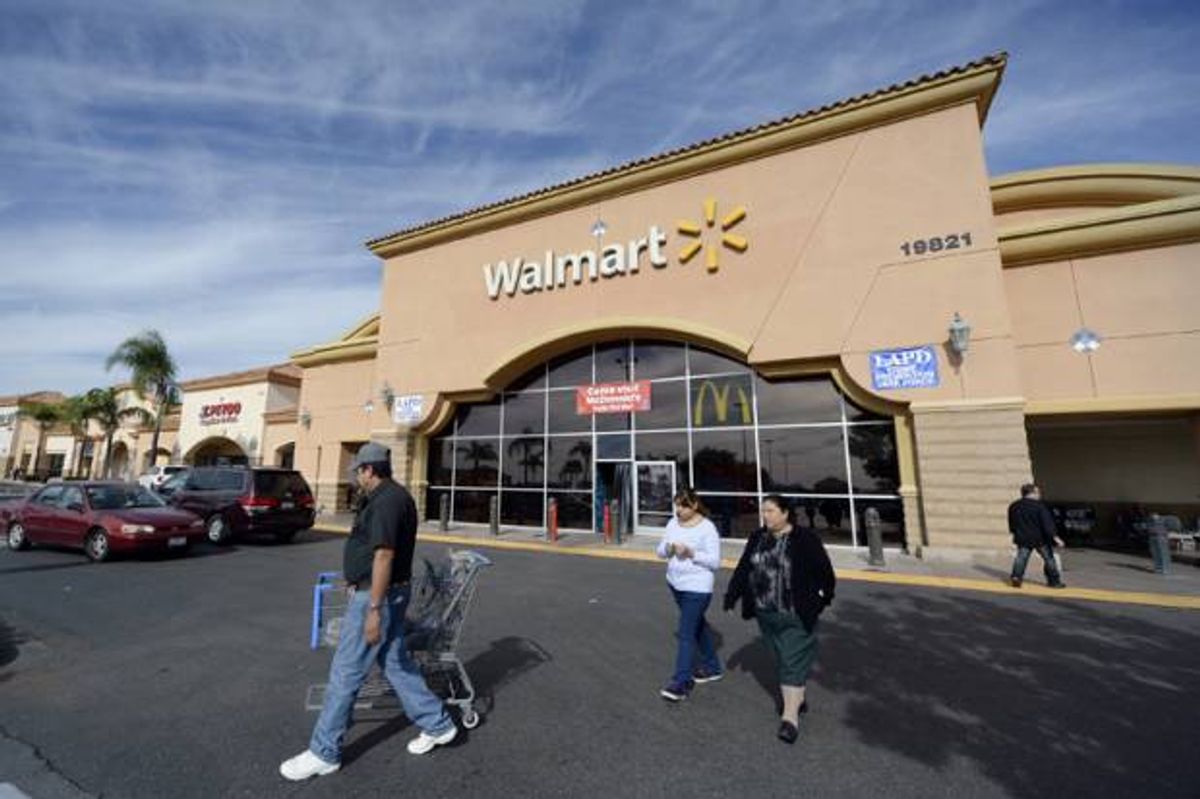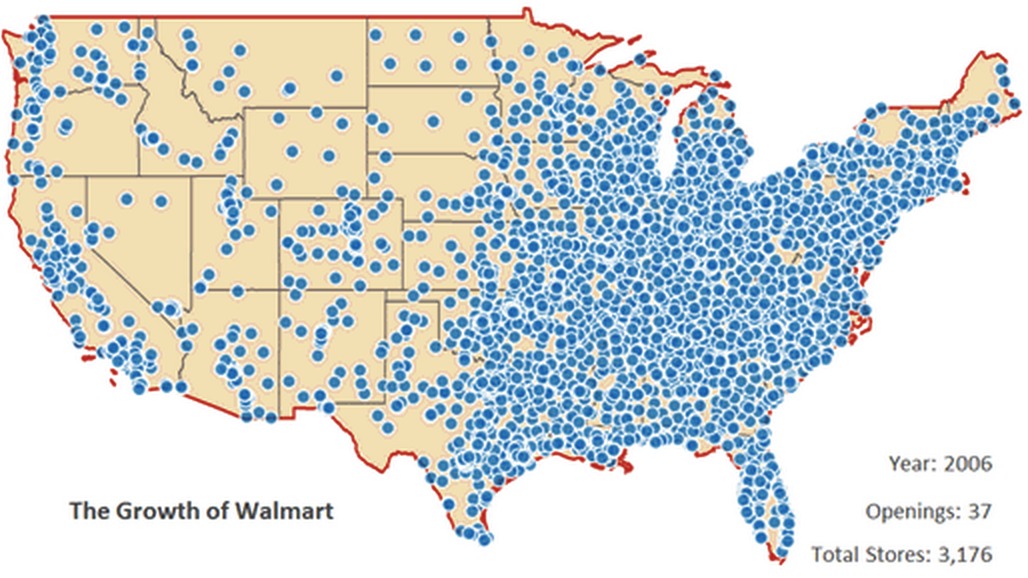Walmart store in Washington DC represents a significant retail presence, impacting the city’s economic landscape and consumer habits. This analysis delves into the retailer’s footprint, competitive strategies, community engagement, and online services within the nation’s capital. We’ll examine Walmart’s history in the area, its customer base, and its impact on local businesses and neighborhoods.
From the geographic distribution of its stores to its pricing strategies and community initiatives, this report offers a comprehensive overview of Walmart’s role in the Washington, D.C. market. We will also compare Walmart’s performance against major competitors, highlighting both its strengths and weaknesses in this highly competitive environment. The study also examines the evolution of Walmart’s online presence and its integration with its brick-and-mortar stores in the District.
Walmart’s Presence in Washington, D.C.
Walmart’s presence in Washington, D.C., while less extensive than in suburban areas, plays a significant role in the city’s retail landscape. The company operates several smaller format stores catering to the urban environment, primarily focusing on grocery and everyday essentials. Understanding the geographic distribution, history, and impact of these stores provides valuable insights into the competitive dynamics of the D.C.
market.
Walmart Store Locations in Washington, D.C.
Precise addresses and operating hours can fluctuate, therefore this data should be verified through official Walmart channels. The following table provides a general overview of Walmart’s presence, categorized by store type.
| Address | Store Type | Phone Number | Operating Hours |
|---|---|---|---|
| (Example Address 1) | Neighborhood Market | (Example Phone Number) | (Example Hours) |
| (Example Address 2) | Neighborhood Market | (Example Phone Number) | (Example Hours) |
| (Example Address 3 – if applicable) | Express | (Example Phone Number) | (Example Hours) |
Geographic Distribution of Walmart Stores Compared to Competitors
Walmart’s smaller-format stores in D.C. are strategically located in areas with higher population density and convenient access to public transportation, unlike their larger Supercenters typically found in suburban settings. Compared to other major grocery chains like Giant and Safeway, Walmart’s distribution is more concentrated in specific neighborhoods, often targeting areas with a higher proportion of lower-income households.
History of Walmart’s Expansion in Washington, D.C., Walmart store in washington dc
Walmart’s entry into the Washington, D.C. market has been a gradual process, characterized by a focus on smaller-format stores rather than large supercenters. This strategy reflects the unique challenges and opportunities presented by the city’s dense urban environment and existing competitive landscape. Significant milestones likely include the initial opening of their first Neighborhood Market and subsequent strategic expansion based on market analysis and consumer demand.
Challenges might have included navigating zoning regulations, securing suitable locations, and competing with established grocery chains already deeply entrenched in the market.
Customer Demographics and Shopping Habits
Understanding the customer profile and shopping habits of Walmart shoppers in Washington, D.C. is crucial for assessing its market position and future strategies. The following sections analyze key demographic factors and shopping behaviors.
Typical Customer Profile
The typical Walmart customer in Washington, D.C., likely encompasses a diverse range of demographics. However, a significant portion might consist of lower-to-middle-income households, families, and individuals seeking value-oriented grocery and household goods. Age demographics would likely reflect a broader spectrum, catering to both younger and older shoppers seeking affordability and convenience. Ethnic diversity within the customer base would likely mirror the city’s diverse population.
Shopping Habits
Shopping habits likely vary based on factors such as location and individual preferences. Frequency of visits might be higher for customers relying on Walmart for regular grocery needs. Average spending could be influenced by store size, product selection, and individual household budgets. While in-store shopping is likely prevalent, the utilization of online ordering and delivery services would depend on factors like technological access and delivery infrastructure availability within specific neighborhoods.
Catering to the D.C. Market
Walmart adapts its offerings to meet the specific needs of the Washington, D.C. market by offering a selection of products relevant to the local population’s preferences and dietary habits. This may include a wider variety of ethnic foods, locally sourced products (if available), and smaller package sizes suitable for urban living spaces. Competitive pricing remains a key element in attracting budget-conscious shoppers.
Competition and Market Positioning
Walmart faces stiff competition in the Washington, D.C. market from established grocery chains. Understanding its competitive advantages and disadvantages is vital for assessing its long-term success.
Comparison with Competitors
- Giant: Often perceived as offering a higher-quality selection of products with a more upscale shopping experience, but at a higher price point than Walmart. Strong local brand recognition.
- Safeway: Similar to Giant, Safeway emphasizes a wider selection of higher-quality goods, particularly in produce and prepared foods, catering to a more affluent clientele. Strong loyalty programs.
- Target: While not strictly a grocery competitor, Target offers a blend of grocery and general merchandise, appealing to a broader customer base seeking convenience and a more stylish shopping experience.
Competitive Advantages and Disadvantages
Walmart’s competitive advantages include its low prices and wide availability of everyday essentials. However, disadvantages might include a perception of lower product quality compared to some competitors and a less appealing shopping environment in comparison to more upscale grocery stores. Limited parking availability in urban locations could also pose a challenge.
Marketing Strategy for a New Walmart Store
A marketing strategy for a new Walmart store in an underserved area of Washington, D.C., should focus on highlighting affordability and convenience, particularly for the local demographic. Emphasizing community engagement initiatives, partnerships with local organizations, and offering products catering to specific cultural preferences could be effective. A strong online presence and delivery options are crucial to compete in the urban environment.
Walmart’s Impact on the Washington, D.C. Community
Walmart’s impact on the Washington, D.C. community is multifaceted, encompassing economic contributions, community engagement, and its influence on local businesses.
Community Involvement
Walmart’s community involvement initiatives in Washington, D.C., might include charitable donations to local organizations, supporting local food banks, and sponsoring community events. Job creation through its stores also contributes to the local economy. Partnerships with local businesses or community groups might further enhance its positive impact.
Economic Impact
The economic impact of Walmart stores is complex. Job creation is a positive aspect, contributing to employment opportunities within the neighborhoods where they operate. Tax revenue generated from sales also benefits the city. However, the impact on local businesses can be debated; some smaller businesses may face increased competition, while others might benefit from increased foot traffic.
Positive and Negative Impacts in a Specific Neighborhood
Consider a hypothetical neighborhood where a Walmart Neighborhood Market is located. Positive impacts could include increased access to affordable groceries, job creation for local residents, and increased tax revenue for the community. Negative impacts could potentially include increased traffic congestion, competition for smaller local grocery stores, and potential displacement of some businesses.
The proposed Walmart store in Washington D.C. continues to face community opposition, with concerns raised about its impact on local businesses. Some residents are exploring alternative options for sourcing goods, including online marketplaces like craigslist gi ne , to support smaller vendors. The debate highlights the ongoing tension between large retailers and local economies in the nation’s capital.
Walmart’s Online Presence and Services in Washington, D.C.: Walmart Store In Washington Dc
Walmart’s online presence is a crucial aspect of its overall strategy in Washington, D.C., offering convenience and expanded reach to customers.
Online Services
Walmart offers a range of online services in Washington, D.C., including grocery delivery, online ordering with in-store pickup, and access to its online marketplace. These services are designed to cater to the busy lifestyles of urban residents.
Comparison with Other Online Retailers
Compared to other major online retailers, Walmart’s online shopping experience might be characterized by its competitive pricing and extensive product selection. However, aspects such as user interface and delivery speed might be areas for improvement relative to some specialized e-commerce platforms.
Leveraging Technology and Data Analytics

Source: salon.com
Walmart utilizes technology and data analytics to enhance its online and in-store customer experience. This might include personalized recommendations, targeted promotions based on purchase history, and optimized inventory management to ensure product availability. Data-driven insights inform decisions on product assortment, store layout, and marketing strategies.
Conclusive Thoughts

Source: grist.org
In conclusion, Walmart’s presence in Washington, D.C., is a complex issue with both positive and negative consequences for the city and its residents. While the company provides jobs, affordable goods, and contributes to the local economy, concerns remain regarding its impact on local businesses, wages, and community character. Further research into specific neighborhood impacts and long-term economic effects is warranted to fully assess Walmart’s overall contribution to the District of Columbia.
